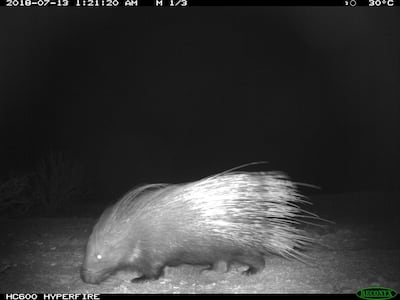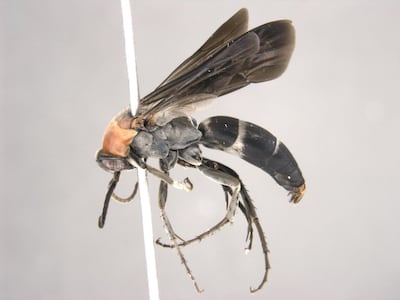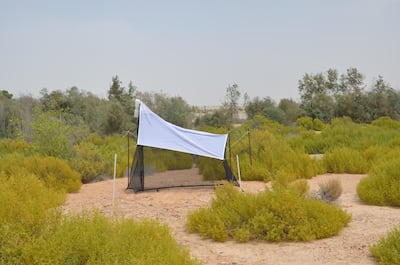It is good news for conservationists, bad news for arachnids.
A new species of wasp, which uses venom to paralyse spiders before dragging them into a lair where they are eaten alive by their larvae, has been discovered in Abu Dhabi.
The latest member of the spider-hunting wasp family was found in Al Wathba Wetland Reserve, a popular bird-watching spot.
It is the fifth wildlife species discovered at the reserve since 2016, and was found as part of a long-term project to better understand and protect biodiversity in the emirate.
In another notable discovery last year, the “elusive” Indian crested porcupine, last documented in the UAE in Bedouin records from the mid-20th century, was recorded using camera traps. It had previously been thought to be extinct in the country.

“We are not really setting out to find new species, but when we do, it’s the icing on the cake,” said Salim Javed, acting director for terrestrial biodiversity at the Environment Agency Abu Dhabi. “If we find something new, it is a blessing for us.
“When you look at what’s happening around the world, and what’s happening with species and their habitats, it’s not always happy news. So if you get something like this, it really uplifts your mood and your spirit.
“It gets the attention of the public and decision-makers, and if a new species is discovered, it shows that an area should be protected. It gives another dimension to the whole conservation story that we are trying to tell.”
The spider-hunting wasp is not aggressive to humans and while its sting is very painful it would usually only attack a person if extensively provoked. However, its behaviour towards spiders has been likened to something from the annals of science-fiction horror.
After finding a spider – which can be twice its own body weight – the wasp will paralyse it permanently with its sting and drag it into a burrow. There, it will lay an egg in the spider’s abdomen.
When the larvae hatches it will eat the still-living spider from the inside out. Larvae instinctively know how to avoid the spider's vital organs for as long as possible to keep the meal fresh for longer.
The species discovered in Abu Dhabi – captured in insect traps and then taken back to a lab for analysis – was found to be distinct from other known spider wasp species because of its genital structure.
After scientists struggled to classify it, it was sent to Berlin in Germany, where experts confirmed it was a new species.
The male wasps can grow to 12mm, while females can grow to 20mm, with the new species added to the list of 32 other variants of spider hunting wasps known in the UAE.
The species has been named ferreola alraeesii in honour of Ali Ahmed Al-Raeesi, a professor and entomologist based at Sultan Qaboos University in Muscat. His work in capturing and identifying other spider wasp types was vital in its classification as a new species.
In 2018, scientists also recorded a Rueppell's fox, the first sighting in 13 years, on camera traps in a remote western part of Abu Dhabi following a nine-month search.
The Arabian sand cat, which is able to live without drinking water, was recorded in more than 17 locations in Al Dhafra region over the course of the year. It gets all its necessary fluid from food. There are 45 camera traps set up around Abu Dhabi, with plans to expand this further.
A rare species of huntsman spider, eagle owls and a dipcadi lily plant were among the other uncommon wildlife recorded last year, the Environment Agency said in its annual report, which it released last week.
“All species are part of the ecosystem, no matter how tiny they are or how big they are, they all have a role to play,” said Dr Javed, who leads the biodiversity monitoring programme which he said has expanded and become more sophisticated since it began in 1998.

“There is also an aesthetic value, the real beauty of going out and seeing a species in the wild, you cannot put a dollar value to that.
“We are trying to expand our monitoring to areas that have not been covered before, and it can turn up something new.
"You can’t set up camera traps everywhere in Abu Dhabi, and there is an element of chance, but we are trying to do it in a strategic way, based on the habitat and the ecology.”



